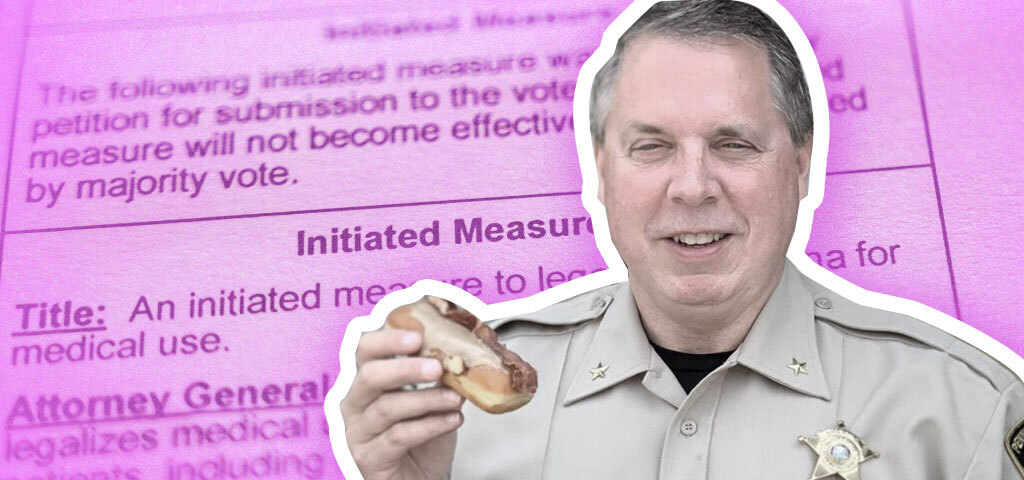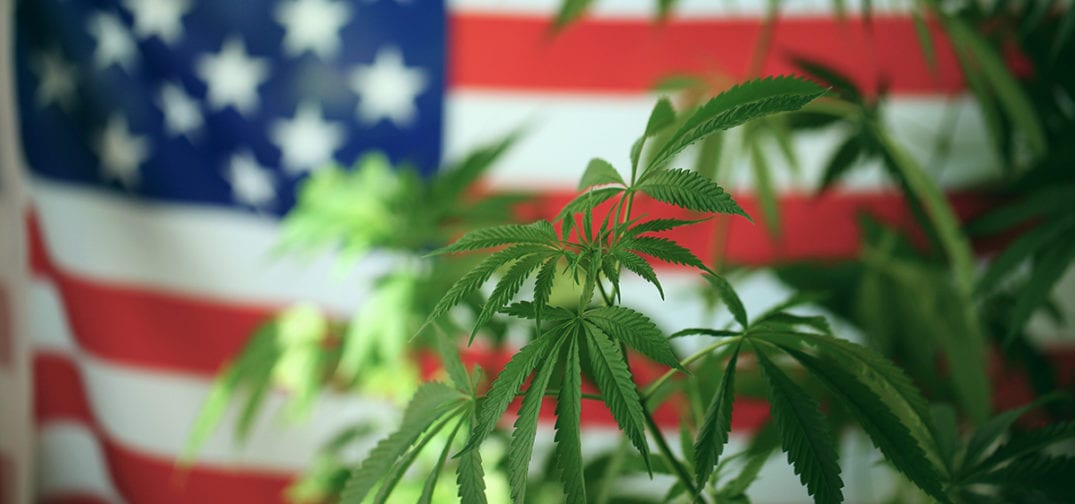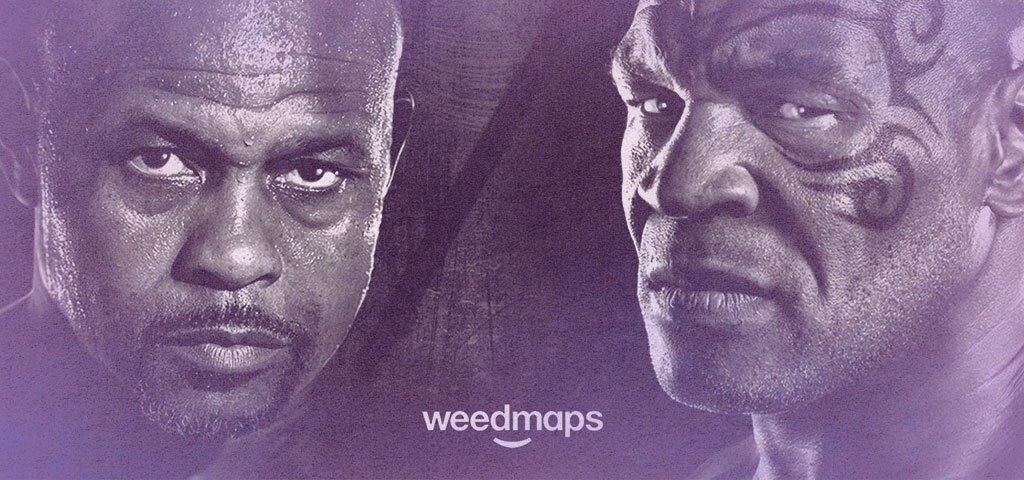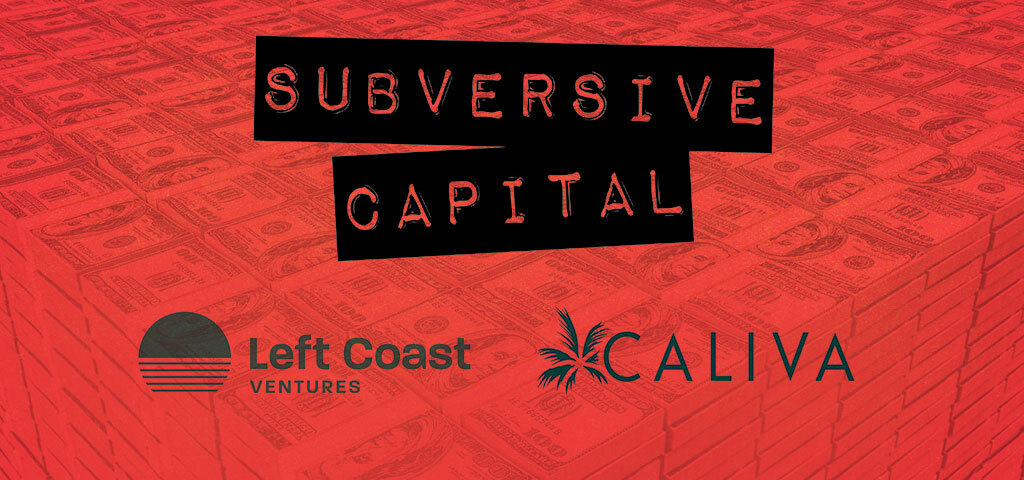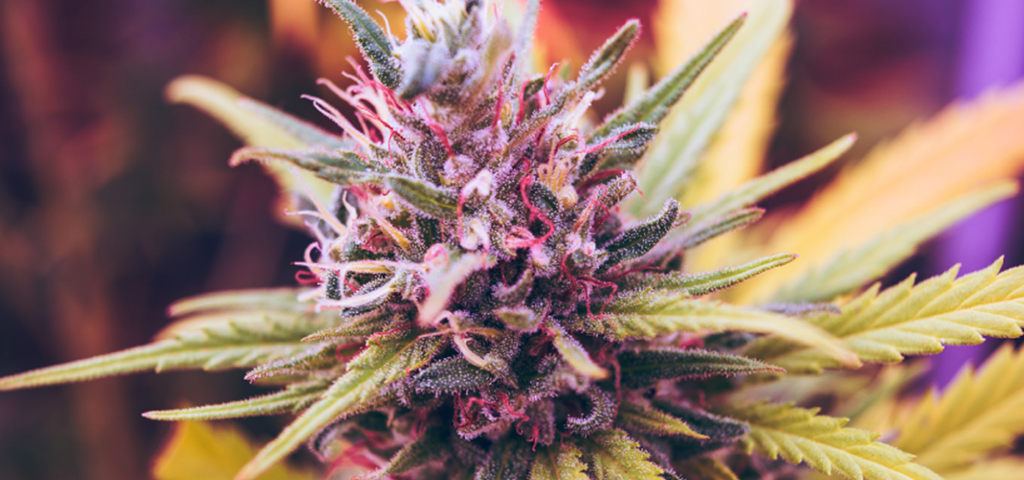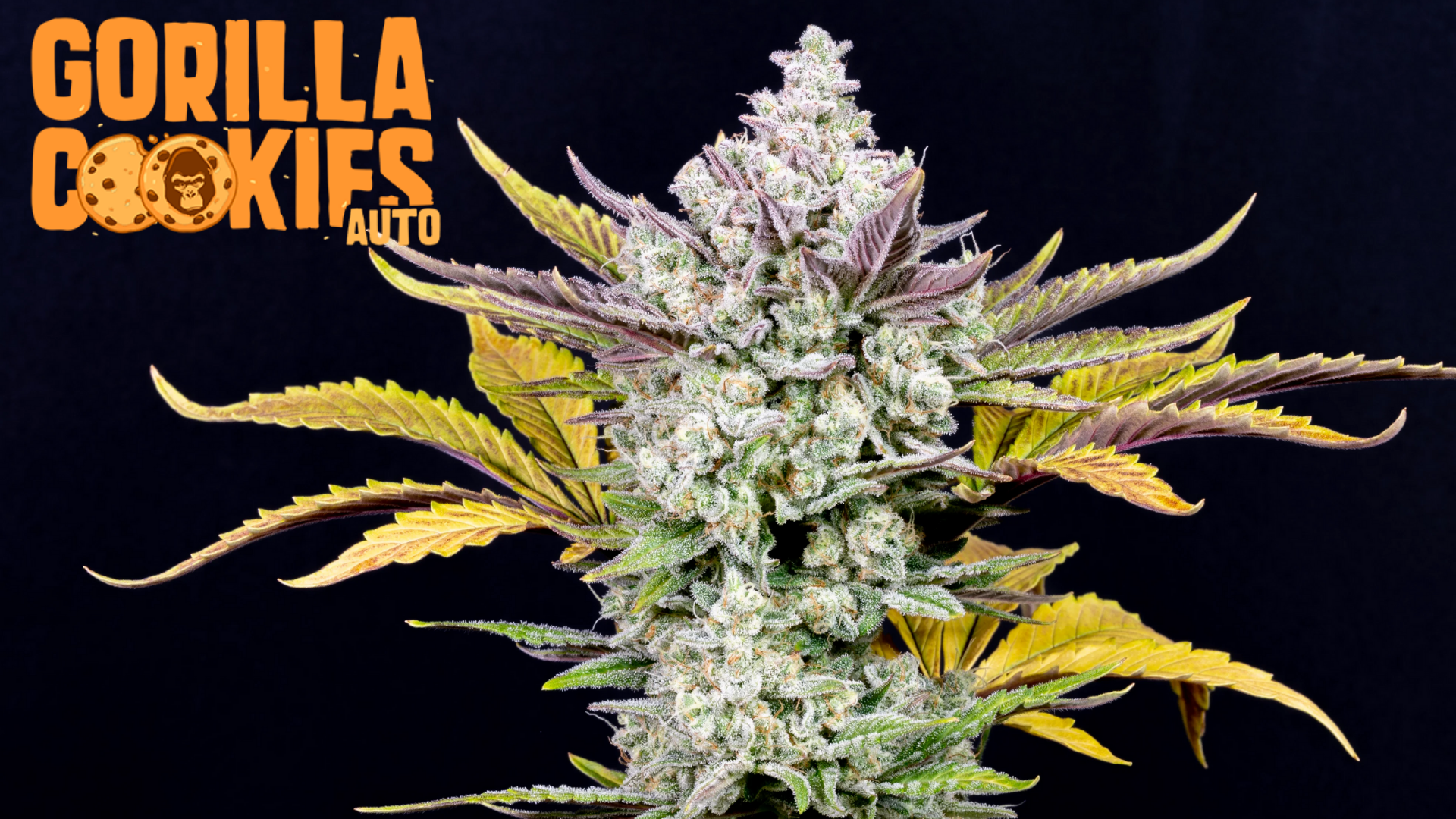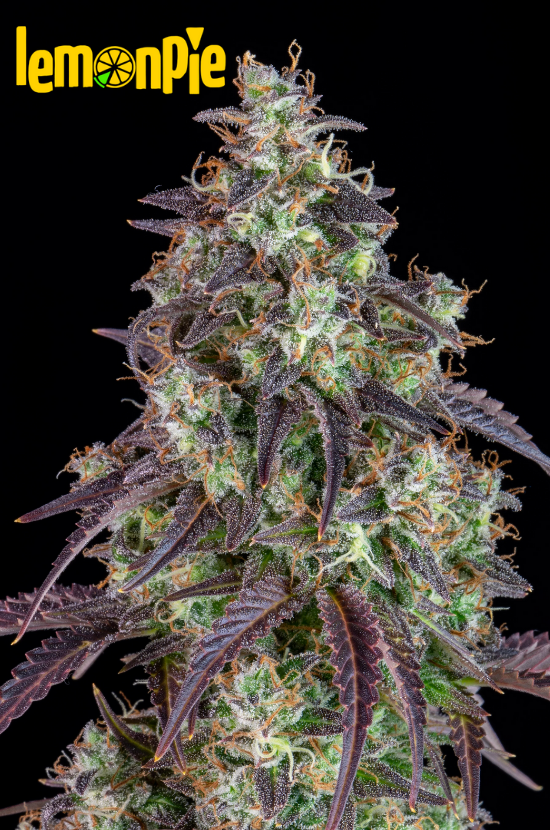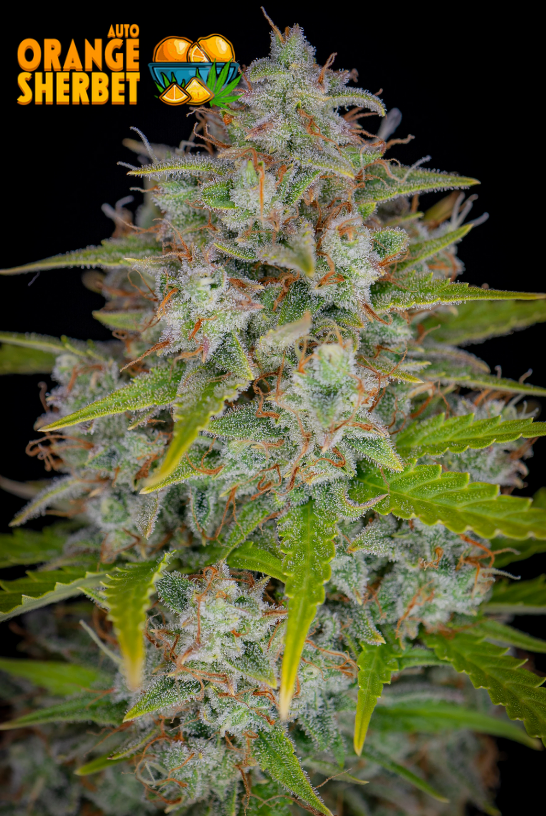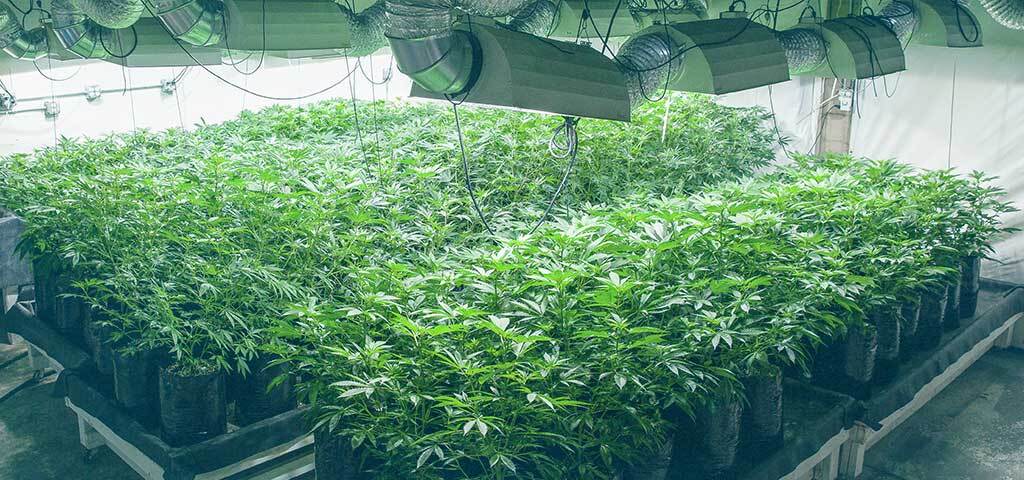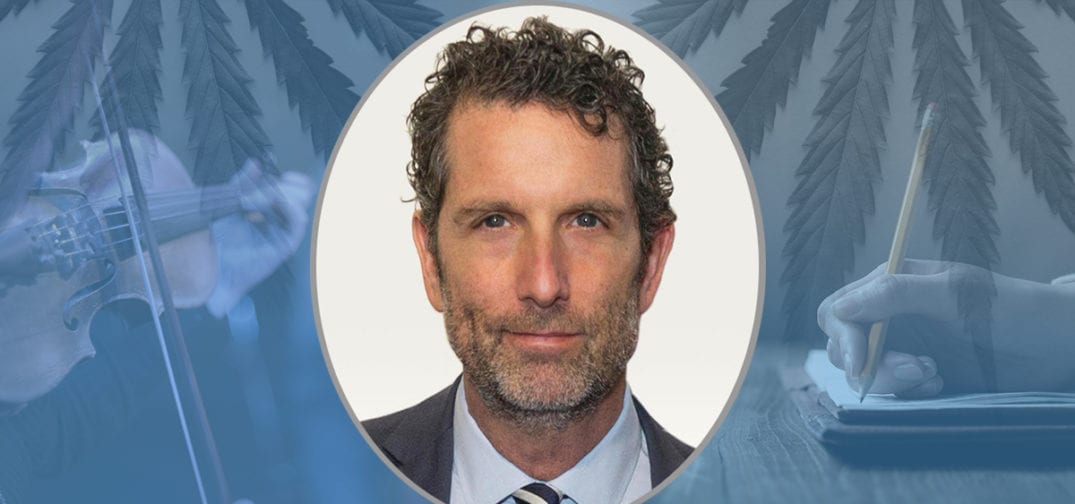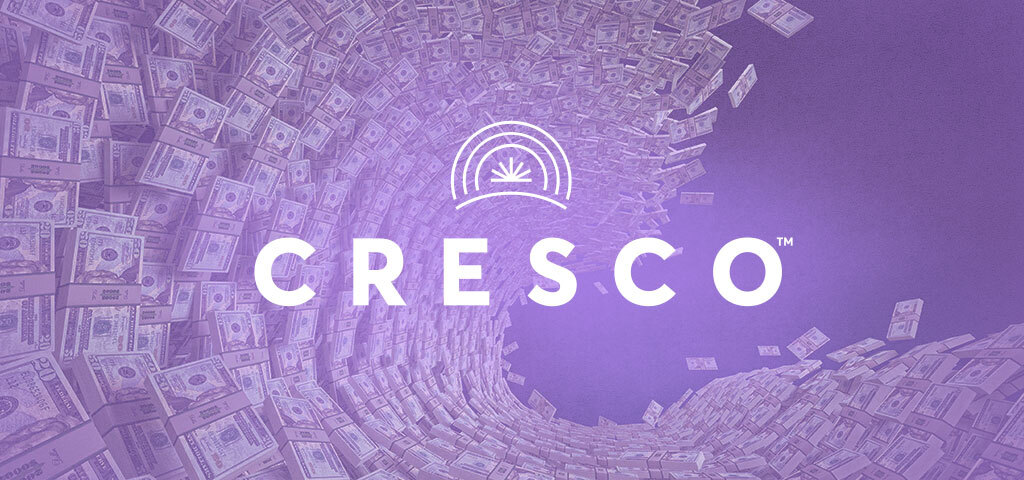Countless authors, musicians, and artists — and, at times, even some of the world’s top scientific and philosophical minds — have turned to cannabis to fuel their creative thinking.
For this episode of the Ganjapreneur.com podcast, Shawn Gold joins our host TG Branfalt to discuss the relationship between cannabis and creativity, and the recent success of Pilgrim Soul’s Creative Thinking Journal, which contains a series of activities and exercises specially selected to encourage creative thinking while under the influence of cannabis. Shawn also shares his experiences transitioning from the corporate tech space to the cannabis industry, offers his advice for entrepreneurs, and more!
You can hear the episode below or through your favorite podcast listening platform, or scroll down to read a full transcript of the interview.
Listen to the podcast:
Read the transcript:
Commercial: At Ganjapreneur, we have heard from dozens of cannabis business owners who have encountered the issue of canna-bias, which is when a mainstream business, whether a landlord, bank, or some other provider of vital business services refuses to do business with them simply because of their association with cannabis. We have even heard stories of businesses being unable to provide health and life insurance for their employees because the insurance providers were too afraid to work with them. We believe that this fear is totally unreasonable, and that cannabis business owners deserve access to the same services and resources that other businesses are afforded. That they should be able to hire consultation to help them follow the letter of the law in their business endeavors, and that they should be able to provide employee benefits without needing to compromise on the quality of coverage they can offer.
This is why we created the Ganjapreneur.com Business Service Directory, a resource for cannabis professionals to find and connect with service providers who are cannabis friendly, and who are actively seeking cannabis industry clients. If you are considering hiring a business consultant, lawyer, accountant, web designer, or any other ancillary service for your business, go to Ganjapreneur.com/businesses to browse hundreds of agencies, firms, and organizations who support cannabis legalization, and who want to help you grow your business. With so many options to choose from in each service category, you will be able to browse company profiles and do research on multiple companies in advance. So, you can find the provider who is the best fit for your particular need.
Our Business Service Directory is intended to be a useful and well-maintained resource, which is why we individually vet each listing that is submitted. If you are a business service provider who wants to work with cannabis clients, you may be a good fit for our service directory. Go to Ganjapreneur.com/businesses to create your profile and start connecting with cannabis entrepreneurs today.
TG Branfalt: Hey there. I’m your host, TG Branfalt. Thank you for listening to the Ganjapreneur.com Podcast, where we try to bring you actionable information and normalize cannabis through the stories of Ganjapreneurs, activists, and industry stakeholders. Today, I’m joined by Shawn Gold. He’s the CEO of Pilgrim Soul, a purpose-driven lifestyle cannabis brand, and creator of the Creative Thinking Journal, which we’re going to talk all about. Very interesting project, like nothing else I’ve ever seen and have had on this show. Before we get into the journal man, Shawn, how are you doing? Tell me about yourself and how you ended up in this space.
Shawn Gold: First, let me say thanks for having me on the podcast. I really love it. It’s really kind of important to normalize cannabis and level people up in how they can participate in this community from both a personal and commercial perspective. So, thank you.
TG Branfalt: I appreciate it. I appreciate it, thank you.
Shawn Gold: I’m this classic ADD kind of person. Like a lot of entrepreneurs, I’ve used cannabis really my whole life for the creative process. When you’re starting a company and building a new idea, I use it to empathize with consumers, to focus. You’ve probably seen some research about ADD people using cannabis to focus. I also use it to make nonlinear connections. Connect ideas that I may be too lazy to do when I’m not using cannabis. It’s like a second opinion for me. So, I kind of started in the cannabis business in high school clearly, like a lot of people, rolling about 40 joints a day and selling them in the apple orchard before school. I’d get high, and I actually just want to say that I do not recommend that.
I had biology first period, and I know very little about biology. I talk to my kids about smoking cannabis as a young person. I was like, “It’s not an amazing idea. Great idea for your brain when your brain is ready to receive it.” In my professional career, it’s really been about doing things that haven’t been done before. I had this company called Touch Tunes, where you could listen on the… this was before the internet. Where you could listen to music on the telephone and hear tracks and sample them. Then I launched one of the first online zines called word.com in 1995. Then launched a bunch of blogs early in the blog space. I launched End Gadget, Joystick, and other blogs that we sold to AOL. Then I became the CMO of MySpace, and scaled that from 25 to 110 million users.
I joined backup with some of the MySpace guys to help scale this company called Textile, which was… it’s now a billion-dollar direct consumer fashion business. We launched brands like JustFab and Fabletics and ShoeDazzle, and Rihanna’s Savage by Fenty. So, while I was at Textile, I connected with the Stanley Brothers and Charlotte Figi through a mutual friend. They needed help connecting with people in Hollywood and meeting people and just making connections. I had a dinner for them and I invited the CEO of MedMen at the time. This was like 2015 maybe. Then kind of like what MedMen was doing as far as normalizing cannabis and making it accessible for the… at the time, they were saying the chardonnay mom by cannabis. They definitely did a great… they’ve done some things well and some things poorly. But they definitely did a great job of normalizing cannabis on the West Coast, for sure.
Then a friend of mine created a brand Lowell Smokes, which is an amazing brand out here in California. I introduced them to MedMen. MedMen invested in them, and then I became the CMO of Lowell. I really helped scale that. Then we can talk a little bit about why Lolo was such a great brand. But I did a collaboration with Notorious BIG’s kid, C.J. Wallace. He has an entity called Think Big, really kind of playing on his father’s legacy. It’s about creativity and social justice. I sent him seven strains that indexed high for creativity and said, “Smoke them and rank them.” We took the top three, and we created this blend, the Think Big creative blend. We gave 10% of the proceeds to the California Prison Arts Project. We put that in the marketplace. We only had 10,000 packs, but they sold out in like a week.
TG Branfalt: Wow.
Shawn Gold: It was a massive hit. I mean, it could’ve been a more massive hit if we did more packs. I bought a bunch of URLs around cannabis and creativity. I’ve been using cannabis for creative thinking for 40 years or so. I decided I was going to leave Lowell and just really focus on this niche opportunity in cannabis, which was to build Pilgrim Soul, focus specifically on cannabis for creativity.
TG Branfalt: A lot of people I’ve had on the show, and especially those who work in the tech space, they often compare the cannabis and the tech space. You were in not just the tech space, but also the really early days of social media. Would you care to give your own two cents on the similarities between tech and cannabis, in your estimation?
Shawn Gold: Yeah. For me, it’s about communicating and connecting with people. Marketing now is so different than it used to be. It used to be if the budget is big enough and the copy is good enough, you can sell anything. Now, it’s about… everything is so transparent. It’s about real… it has to be exceptionally authentic. Everything is driven by, if you have a great product, you don’t even need… you need marketing, but you don’t need advertising. Because the consumers will sell it if you look at something like Tesla or some great tech products. They really sell themselves when they are disruptive and reduce friction I people’s lives.
I don’t think you can build a great cannabis brand without using technology. I guess the other analogy would be that it’s a new business that you have to invent. We’re inventing a new business. A lawyer in technology, I mean sorry, a lawyer in cannabis is a creative person. A lawyer, a finance person in cannabis is a creative person. You have to be creative in this business because you’re inventing it. Same thing with tech. A lot of young people with humorous… who were creating businesses like Facebook and Snapchat, and so on and so forth. I think the analogy is that what was drawn to me, having really a history of building and doing things that hadn’t been done before, is cannabis. What are the rules? What are the policies? How do you connect with consumers, and how do you market to consumers with all these… with one hand tied behind your back, how do you… And there are some mechanisms that I’d love to share, how I’m building my brand in the brand universe, that hacks the whole cannabis marketing ecosystem and building a brand.
TG Branfalt: Well, I mean, something that immediately separates the Pilgrim Soul Brand just by your description is that, your focus on creativity. But going back a little bit, you had said you had indexed some strains for creativity. Can you explain what that means to people who might not really understand?
Shawn Gold: Yeah. I’m working with an amazing company called Abstrax Labs out of Irvine. These guys do… They’re two PhDs in analytical chemistry who are leading the company. They do oils for Sherbinski and the Jack Herer family, and Josh D, who invented the OG brand. They are sort of elitist guys. We analyzed over 100 different strains that indexed high for creativity based on survey data from Leafly and a bunch of other great sources. We looked at strains that had creativity and secondary and tertiary states of mind, like creativity and focus and euphoria. We indexed those. We chemically analyzed them and build 3D models of them, and looked at the cannaboid and terpene profiles.
TG Branfalt: Wow.
Shawn Gold: Then we created different blends using multiple strains to create… various creative impacts for creative focus, creative imagination, creative awareness, and creative reflection. Which is a little more myrcene-driven, because it’s about looking inside yourself. We used the best available science that we could and created some science with these guys. But again, this is also kind of macro, because some people can smoke a sativa and fall asleep. I like to say that the brand is 30% science, probably 30% placebo, and 30% curriculum.
We have all these other products that are meant to be used with the cannabis that enhance the efficacy. The journal you introduced is one of them. You can smoke the creative imagination blend and think about your ex-husband or your mortgage. There’s no guarantee you’re going to have a creative experience. If you use the journal, it really puts guardrails on it. I keep telling the story of 30% this, 30% that. Someone was like, “What’s the other 10%?” I was like, “Oh, shit. I forgot the other 10.” Now, I just say it has to do with the relationship with your mother. Everything is associated with that.
TG Branfalt: Let’s talk about the book a little bit. You guys sent me one. At first, I’m just looking through it. My first thought is, this is the stuff that I did in creative writing classes. For me, it was sort of like having an old friend back. Because when you’re a college student and you want to creatively write, and you’re almost forced to creatively write, it makes you do something. Some of us aren’t self-starters, whatever. The point that I’m trying to make is that it’s very accessible.
Shawn Gold: Yeah.
TG Branfalt: Tell me about the process that went into creating this and how it fits into your brand’s overall mission.
Shawn Gold: Yeah, so we created the journal so that if you’re a really creative person, you can use it. But if you’re not creative, there’s a lot of prompts that guide you through. Cannabis itself is about opening up the creative aperture. If you’re really creative, then the aperture opens super wide. If you’re not that creative, then it still opens the aperture a little bit more for you to be more creative than you usually are. We wanted to create something creative, these prompts. The journal is full of… there are some adult coloring pages and things to do, and some quotes, and things to think about. But it’s really about 50 different creative challenges that are in the book, that are in the four different categories I mentioned of creative thinking, that help you look at yourself and look at the world from a different perspective.
The brand is about helping people unlock their innate creativity through cannabis, curriculum, content, and community. It’s all engineered to optimize an individual’s performance there. One thing to think about is, everyone is born creative. When you’re a baby, you knock over a plant and you feel the leaves and you feel the dirt. You are 100% in a creative experience, but we repress it. We’re told that creativity, making mistakes are bad. Creative people don’t make any money. The brand is really about helping people unlock their innate creativity and kind of get past themselves.
As far as how it works, as I said, each challenge pushes you to rethink the way you see yourself. You reveal in the exercises misconceptions about creativity and annoying aspects of the mind that lead us to repress creative thinking. But the principal learning mechanisms are what we call think difference, which challenge you to identify and change cultural, habitual, and your normal patterns of thinking. We’re trying to jar your mind into looking at something from a different perspective. As you said, they’re all based on classic techniques. We just made them a lot more concise and a lot more fun, because no one wants to read a lot of instructions while they’re high. That’s the last thing you want to do.
TG Branfalt: You mentioned briefly, you mentioned before, repression. One of the things that I did notice is that in times when… After I got the book, it would be on my coffee table. At times when I would normally pick up my phone to scroll through Facebook, I was actually opening up the book and thumbing through the pages, and chuckling at the horrible poems. Some of the stuff that’s in there to begin with. I think that one of the things that it served for me, especially we’re in coronavirus and everything else, was that it took me away from my phone and actually made me happier.
Shawn Gold: Oh, that’s so great to hear.
TG Branfalt: What have you heard from other consumers, and what were the sales like?
Shawn Gold: I created this thing as an adjunct to the Cannabis Project, which is launching in Q4 in California. But I thought it was going to be sort of a breakeven thing that would ultimately enhance the efficacy of the cannabis product. But it’s really taken on a life of its own. It’s been crazy beyond my wildest expectations. We sold out of the first 1,000 of them in 24 hours, then we just-
TG Branfalt: Seriously?
Shawn Gold: Seriously. We ordered 50,000 more after that.
TG Branfalt: Unbelievable.
Shawn Gold: If you go to the… there’s an ad. There’s no necessarily link to it. I mean, there is a link to it, but there’s no simple link to it. But we have an ad that says… One of the techniques they used in advertising is a classic technique where you help people identify with the product by saying who it’s not for. There’s one of my ads that says, “This journal is not for squares, the man, people who don’t get it, people who are stuck in the past. People who are afraid of change.” There was over 1,200 comments on it. Then there’s another 1,000 shares. People have shared this ad 1,000 times with their friends.
TG Branfalt: Wow.
Shawn Gold: In the comments, there’s over 3,000 tags of people tagging their friends like, “You have to see this.” And what’s maybe the most charming thing is that people are asking, “Hey, is this any good? Did anybody buy this?” You have like three, four, five, six, seven responses like, “I got it. I’m doing it. I love it.” I put a lot of heart and soul into this. I’ve been using these techniques for a long time. But I have to say, I didn’t take it as seriously as my audience did.
There’s real science and technique behind this, but there are people writing in that are like, “I was in a creative rut. This changed everything for me.” My neighbor, who is in the band Phantogram, was in this creative rut. She was like, “It’s taking me out of it.” It’s totally helped. Her bandmate didn’t know that I, her neighbor, created this and sent her a link to it. She should use this. I created this with a lot of love, so I feel like the universe is rewarding me a bit. But I definitely did not think it would take on this kind of life of its own.
TG Branfalt: You mentioned that you put heart and soul into this. My favorite activity that I’ve done in this is the creating of a class. I mean, because I’m a college professor, I’m always like, “I would love to teach a class on this. I would love to teach a class on this.” Well, I actually got to write down how the class would… the title of the class, the syllabus, the assignments. I’m sitting there writing it and I’m like, “This is just like the stuff, the course descriptions, that I write for college. Except I’m not writing it about media studies, I’m writing it about professional wrestling or video games.”
Shawn Gold: That’s awesome.
TG Branfalt: That for me was like, “Oh, I can finally get this out of my head.”
Shawn Gold: That’s great to hear, because some of these I almost didn’t put it, like, “This doesn’t seem fun,” or… I hear people talking about various exercises that they’re riffing on that are personal to them. The syllabus seemed kind of interesting to put it in there. But the fact that you are connecting with that more than the other ones is really great to hear.
TG Branfalt: Yeah. So, what’s your favorite activity in the journal and why?
Shawn Gold: It depends on the day and the moment. There’s the imagination, awareness, focus, and reflection section. I’m going to give you a couple. I like a horrible poem, which you mentioned, because…
TG Branfalt: You do.
Shawn Gold: One of the biggest killers of creativity is judgment. This is sort of in the beginning of the book. If you set out to write a horrible poem, then you can’t fail. You might fail by writing a good poem, but that’s not so bad either. That’s a great mechanism. Then there’s one in the focus section called Losing Speech, where you’re the coach of your kid’s peewee basketball team, and you’re up 10 points at the half, but you bet heavily against them.
You have to create a speech, a halftime speech, that allows them to lose with dignity while you trash your own. It’s about manipulation through storytelling. You have to empathize with… You have to create a lie and create a story, but you have to use empathy not only for the kids, but their parents. There’s a lot going on in this, which is part of the creative process. But it’s in the creative focus section because you’re using both logic and making stuff up at the same time.
TG Branfalt: It is really interesting how challenging some of it actually is. Because you open it, you flip through it, and it’s goofy. There’s coloring sections, which is fantastic because adults should definitely color more. There’s stuff like that, or there’s one activity where you have to use certain words to describe people, or it’s a letter I believe, to grandma. A letter to grandma.
Shawn Gold: Oh, a letter to grandma.
TG Branfalt: I’m sitting there and I’m looking at it. I’m like, “This is actually challenging.” I’m not going to lie, I did move on.
Shawn Gold: That’s the multiple entendre one where you have to write a letter to your grandma. It’s kind of a mad lib type thing. You have to write a letter to your grandma, but all the words have a double meaning, like blunt.
TG Branfalt: Brick.
Shawn Gold: A lot of them are sexual too. That one I almost did not put in because it was a little too provocative, but only if you have a dirty mind. If you don’t, it’s fine. There’s one in the reflection. The reflection section riffs on a bit The Artist’s Way, the classic book. Most journals are really creative and reflection driven, where they ask you to look inside yourself to find whatever, creativity, whatever it is. That is certainly part of this one, but it’s only one chapter. There’s one in there I really like which is, write a letter from your 80-year-old self to yourself today. What were you like after 50? What advice would you give to yourself?
That’s a really cool mechanism to understand who you are, what you want to be, and where you want to go. One of my advice was to hangout with younger people and stay young. But another one was, always take the stairs. When you get to be my age, me talking as an 80-year-old, taking the stairs is a privilege. You have to earn it. Taking the stairs every day after 50. It’s really charming and intuitive. You learn about yourself from some of these prompts.
TG Branfalt: What did you learn about yourself when putting this together? I mean, it’s not just… The process itself is creative. The end product itself is creative.
Shawn Gold: Yeah.
TG Branfalt: What was that process like for you? You said you didn’t include things, you did include things that you think maybe you shouldn’t have. So, what did you learn about yourself in this process?
Shawn Gold: Well, it’s interesting. I’m starting this company and I’m doing curriculum and content and community. I’m raising money for this brand. I’m pitching, and I’m talking about this journal. I have the cover of the journal, but I don’t know what the journal is going to be. I don’t actually know what’s in the journal, I just know I’m going to create it. But I had 100% confidence that I was going to create this product, and it was going to be a usable, interesting product. I learned to believe in myself, for one.
I’ve had a bunch of failures, but this, I thought that I could create it. I didn’t know what the format exactly was going to be. So it required a lot of empathy. Okay, you’re high. You don’t want a lot of instructions. This needs to be concise, but it needs to be… You need to think this is interesting whether you can do it or not. You need to learn from this whether you do the exercise or not. Then the examples, they need to be kind of funny and amusing that you want to share with people whether you do the exercise or not. I think the biggest thing I learned ultimately is to believe in myself. I also agreed with myself that I had the skills to create it. Empathy, I’ve led marketing for a lot of big… MySpace, and got just some really influential properties.
People often say, “What’s your secret to marketing?” For a long time, I said, “Empathy. It’s all about empathy. You’ve got to connect with that target audience and make them feel something, and make the world a better place for that person.” Now, my modern answer to that is data and empathy. Everything you empathize, you have to prove with the data. Then you readjust, and you’re constantly iterating using both data and empathy. That was a really long winded answer to your question. I don’t even know if I actually answered it.
TG Branfalt: No, you totally did. I actually did start using cannabis at a relatively young age. I was like probably 16 when I started using it every single day, and did find at 16, it’s about the time that I really started writing creatively. Short stories, poetry, which I no longer… I can’t believe I just admitted that I wrote poetry ever. Anyway, for me, I always knew that cannabis made me more creative. Then the music I would listen to, you start to realize the artists are also high on cannabis. You’re like, “Oh, there’s actually some sort of… It’s not just me. It’s all these other musicians that I love and I listen to.” During this process, I’m sure that you… and not just the process of creating the book, but also the process of creating creative cannabis blends. What have you uncovered between the history of science and cannabis and creativity that most people might not know about?
Shawn Gold: The actual research on cannabis and creativity is pretty limited because it’s prohibited. The use cases are abundant. As you said, cannabis has been used by artists, scientists, thinkers, for thousands of years. The output of cannabis creativity is immense. Half the songs on Spotify would be gone if you took cannabis away. Hip-hop, punk, jazz, R&B, so on and so forth.
TG Branfalt: Country is all that’s left, I think.
Shawn Gold: It was interesting. These scientists, or these computer scientists, ran these algorithms to see the number of mentions of cannabis in any genre. The number one genre was country.
TG Branfalt: How is that possible?
Shawn Gold: I’ll send you the article. I was shocked, I was shocked. Willie Nelson clearly.
TG Branfalt: For sure.
Shawn Gold: But there’s definitely a lot of country people using cannabis. There’s an article on PilgrimSoul.com about country singers who use cannabis for creativity. Artists, a lot of people have been using it. Sarah Silverman, all of the… I had a meeting with Sarah Silverman’s manager and in my deck it said, “75% of the comedies on television would be gone if it wasn’t for cannabis.” She said, “I think that’s a little low.” I did a lot of research. By the way, also, it needs to be said that using cannabis does not mean that all of your ideas will be great. Probably actually most of them will be awful.
TG Branfalt: I know.
Shawn Gold: It’s not about that. It’s about, it’s better to have 10 ideas and one good one than two highly inhibited ideas. That’s really the point. The science behind it is sort of cannabis’ ability to stimulate the blood flow of the frontal lobe. It allows neurons to fire in a more uninhibited way. If you read about it, that’s what you’ll find. It’s really stimulating the frontal lobe, which is the base for divergent thinking or no holds barred creativity. What we call out-of-box thinking. That’s the first thing, is this frontal lobe stimulation. But the next thing working together with it is really important in that cannabis is a creative maximizer. It deactivates a specific part of the brain which is about inhibition and judgment.
There’s a region of the brain called the dorsolateral prefrontal cortex that is connected to planning, inhibition, self-censorship, and control over emotion. Cannabis is known to slow it down and deactivate that area, and suppress these functions which help really elevate creative thinking. It’s really a two part thing. It’s one, stimulating creativity in the frontal lobe and repressing judgment that allow cannabis… The other issue with cannabis research and creativity is the definition of creativity. A lot of people will get caught up in, what is creativity? Again, it’s about empathetic… I define creativity as empathetic understanding, enhanced imagination, pattern recognition, and hyper focus. All of those things come together to help us put old ideas together in new ways that have value.
TG Branfalt: The way that you’re describing what you know, you can tell that all of those things went into putting this product together. It comes at really the perfect time, right? When a lot of us are stuck at home and can’t do a whole lot. I do want to thank you for sending me a copy, creating the thing. Congratulations on your success, because it’s funny. It’s like I’m a cannabis brand, but I suddenly have become this really well-selling author because of starting a cannabis brand. The last question that I want to ask is, what advice would you have for entrepreneurs looking to build more of a “lifestyle brand?” I’ve had hundreds of guests who have cannabis brands on this show. I think that you are probably the first that is taking this lifestyle brand to the next level.
Shawn Gold: Yeah, thank you for that. I spend a lot of time looking at cannabis brands. It appeared to me going into Hall of Flowers in California, 95% of the brands out there were pretty much just packaging. It became clear that the next wave of cannabis brands were going to be really vertically focused, where people try to own a very specific niche of the industry. It would be mission driven with a really strong belief system, because people buy products from companies that believe what they believe in every category of product.
There are so many cannabis products where I don’t really know what they believe. I don’t know what they stand for. I don’t know what their role in society is. All these products, for the most part, get you high. They get you to the same place. How do you differentiate? How do you stand for something? How do you connect with consumers? My advice in building a lifestyle brand is to really find an authentic mission that is personal to you that you believe in. One of the great… one of the questions I always ask myself to get there is, how do you keep score other than money? When you’ve got that scoreboard, besides cash, what’s the impact that you want to make? Really defining that and thinking about how you enhance someone’s life and create a promise for a better tomorrow relative to your target audience.
Really knowing who you are, what you stand for, and what your role in society is, is essential for creating a lifestyle cannabis brand. But that’s sort of the ethereal part of it. The mechanistic… I don’t know if that’s an actual word. Really thinking about the brand universe. There are so many limitations in the cannabis space. You can’t advertise on social media. You can’t really advertise on Google. I created the brand universe with the journals and content, and there are some other products I have coming out that are meant to be used while you’re high. All these are meant to… one, they are meant to drive revenue and diversify revenue. They’re all meant to enhance the efficacy of the cannabis product itself.
It’s about creativity. Everything is meant to enhance creativity. All of the products, the content. The content also is meant to help me own my vertical and really lock in SEO around cannabis and creativity. It establishes me as an expert, all the content on PilgrimSoul.com. It helps people because it’s very utilitarian content about how to be more creative. But again, really as far as a brand goes and marketing, it’s an SEO play at the same time. The journals allow me to build a national cannabis brand with advertising in social media.
There’s rules where I won’t be able to have my cannabis, my actual cannabis product, within two to three clicks from the journals to really make sure it’s safe within all the rules of Facebook and everything like that. Right now, I’m advertising on Facebook and Instagram, and scaling this thing up. I’ll probably spend about $1.5 million on advertising just for the journal to make $4.5 million in revenue. What’s great about that is now I’m building this brand.
If I do a partnership with a cannabis group in Michigan, I can say, “Look, I’ll give you air cover. I’ll advertise this journal in Grand Rapids on Facebook, and promote PilgrimSoul and Cannabis for Creativity, and Create Desire for this category and this product. You’ll be able to buy the journal inside the dispensary as much… as well as the cannabis.” It’s a really unique advantage that other cannabis companies don’t have when you have a brand universe with other products. It also helps you establish relationships with banks based on revenue outside of cannabis. It ultimately makes just the whole thing more desirable, more viral. Those are some of the levers that I’m pulling and building, why I’m creating a lifestyle brand and how I’m using all these techniques to scale the business.
TG Branfalt: I’m just thinking about the dispensaries I’ve been to in Massachusets that there’s not a whole lot of books on the shelves in those dispensaries. To your point of being unique, I mean, in many of those places, you’d probably be the only book on the shelf.
Shawn Gold: There are some cookbooks and recipe books in California, but I’ve been getting a lot of calls from dispensaries all around the country who want to carry the book. I sort of coined this category as purpose driven recreational, where it’s about getting high and having a good time, but there’s a focused output that’s positive. You have a lot of these people, like in Massachusets, who are particularly strictly medicinal. Now, they need to go to recreational. The bridge I think is purpose driven recreational cannabis.
TG Branfalt: I think another interesting byproduct of this, and we’ll have to have you on the show at a later point to talk about this, is the data I think that can be derived both from the chemistry aspect of your products. Myrcene, you mentioned myrcene. This is all stuff that we don’t really have time to get into. But also, if you get people who use your product and then use the book, I think you would get a lot of really interesting data points out of that. Then to your point earlier, you said that data is something that’s very important.
Shawn Gold: That’s another thing that I forgot to mention. I’m building direct consumer databases with these non-cannabis products. When you sell through a dispensary, they own the consumer. As a brand, you need a way to connect with the consumers directly. I’d love to come back on when I launch the actual cannabis product. Then we can get into the science and really break down a lot of the strains that we’re using, why we’re using them. We can maybe even bring on the Abstrax Labs guys to talk about what they do and how they’ve analyzed the different strains, and the dominant terpenes for each effect.
TG Branfalt: I would love to. Before I have you give people plugs, I do want to read my five line horrible poem.
Shawn Gold: Awesome.
TG Branfalt: “The Grinch stole Christmas and my heart. He beat his dog. A terrible man, he got coal.” That’s it, that’s my five-line poem.
Shawn Gold: Listen, E.E. Cummings up in there.
TG Branfalt: I never wrote poetry that rhymes, and I wasn’t about… It actually would’ve been more horrible if I had made it rhyme. Where can-
Shawn Gold: I can do a Ganjapreneur discount for the journal.
TG Branfalt: Yeah. Why don’t you tell people where they can find it? Any sort of discount codes, where they can learn more about Pilgrim Soul. All that sort of stuff.
Shawn Gold: Yeah, so PilgrimSoul.com is the website. There’s a link to the journals on the top of the page. Ganjapreneur for 25% off. Check it out. You might see something on Facebook. Pilgrim Soul Creative is our Instagram account. Just check out PilgrimSoul.com, and again, Ganjapreneur for 25% off, which is like $7 in change. There’s hours and hours of content, really productive content. There’s a lot to do. This thing could take you weeks, and you’re entertaining yourself with your own mind, which is a charming thing.
TG Branfalt: And honestly, very rare. Usually, you get bored and you pick up your phone. I personally have found that has decreased the number of times that I’m looking at my phone, which I hate. Shawn Gold, CEO of Pilgrim Soul. Thank you so much for coming on the show. Really, I can’t wait to have you on after the product, the strains launch. We can definitely talk about data and terpenes and other really neat stuff.
Shawn Gold: Thanks, man. Thanks, TG. I really appreciate it. It’s been pretty great.
TG Branfalt: You can find more episodes of the Ganjapreneur.com podcast in the podcast section on Ganjapreneur.com, on Spotify, and in the Apple iTunes store. On the Ganjapreneur.com websites, you’ll find the latest cannabis news and cannabis jobs updated daily, along with transcripts of this podcast. You can also download the Gajapreneur.com app in iTunes and Google Play. This episode was engineered by Trim Media House. I have been your host, TG Branfalt.


